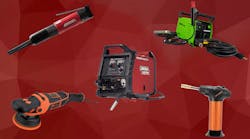At the beginning of this year, major aftermarket and automotive OEM groups signed a memorandum of understanding (MOU) that unofficially expands the requirements of the Massachusetts "Right to Repair" law (which went into effect last year) nationwide.
However, one aspect of the Massachusetts law has not made the transition to this nationwide agreement: the inclusion of heavy duty trucks. The HD vehicle manufacturers were not part of the group that drafted and signed the MOU.
The heavy duty aftermarket, however, hopes to address the issue in much the same way as the rest of the aftermarket, through a negotiated agreement between the OEMs and the repairers and distributors.
The Commercial Vehicles Solutions Network (www.cvsn.org), an alliance of independent parts and service aftermarket distributors for the transportation industry, hopes to forge a similar agreement with manufacturers soon.
As in the regular aftermarket, HD vehicle repairers need to be able to read diagnostic codes and correctly locate sensors on the vehicles. "We need those wiring diagrams, because the sensors aren't always located where the item that's reading the failure is," says Marc Karon, president of Total Truck Parts in West Palm Beach, Fla., and former president of CVSN. "You also have to make sure the right part gets replaced on the vehicle. Many parts look identical but perform differently. Most importantly, we have to be able to re-initiate the computer so that the system knows the repair is done, and that requires knowing the codes. The OEMs guard those codes like the family jewels."
Any delay in the repair due to a lack of repair information can be costly for a fleet operator. If the owner of a light vehicle or truck has to be without a car for a few days, they can get a rental or a loaner. That's not so easy if you operate a fleet of dump trucks. "When the truck is down, you are out of business," Karon says.
HD vehicles almost didn't make the cut in Massachusetts. That's because two different laws were actually passed there, one by the state legislature and one by ballot initiative. Once the ballot initiative passed in Massachusetts the automotive OEMs came to the table to hammer out an agreement, but the heavy duty manufacturers backed away. "Even though the original referendum that passed applied to all of these categories, the HD people felt they could sit on the sidelines because the auto group was going to cut a deal with the associations," Karon says. "They got together, and the HD people fell out. That's when we got engaged, because we realized we'd have to do this on our own."
But before the HD repairers could get started, the Massachusetts legislature began reconciling the original bill with the law passed by referendum. "In the end we won and were able to get Massachusetts to say that HD (commercial vehicles) are included," Karon says. "That changed the dynamic, because now we could talk to the manufactures. We had been trying to reach out to the truck manufacturers since at least 2002, but we had no leverage before.
"Once you pass a law in one state, it's tough to build trucks differently for one state versus another," Karon continues. "Now we need to come up with something that will meet the ends of our dealers and that the manufacturers support as well as the independent repair shops."
For its part, the heavy duty OEM association, the Truck and Engine Manufacturers Association (EMA), originally opposed including heavy duty in the Massachusetts bill because it called for some interface technology that is not commonly used on commercial trucks. There is also proprietary information in some of the systems that is not necessarily owned by the truck manufacturers.
According to Karon, the industry associations are now discussing a potential nationwide agreement similar to the light auto MOU. "I'm optimistic because I think it is in everybody's best interest to come to a similar MOU," Karon says. "We're still pursuing legislation in other states, and that will probably continue until we're convinced we have an agreement that's close to reality."
On the manufacturer side, the EMA is leading those discussions. "Most of the computers deal with engine issues, but they don't necessarily have complete authority to cut a deal," Karon says. "There are lot of vehicle manufacturers in this market, and some of them are not represented by that organization. It will be more difficult to get an MOU done on for HD than it was on the automotive side, but we think we can get around those issues."
Subscribe to ABRN and receive articles like this every month…absolutely free. Click here

